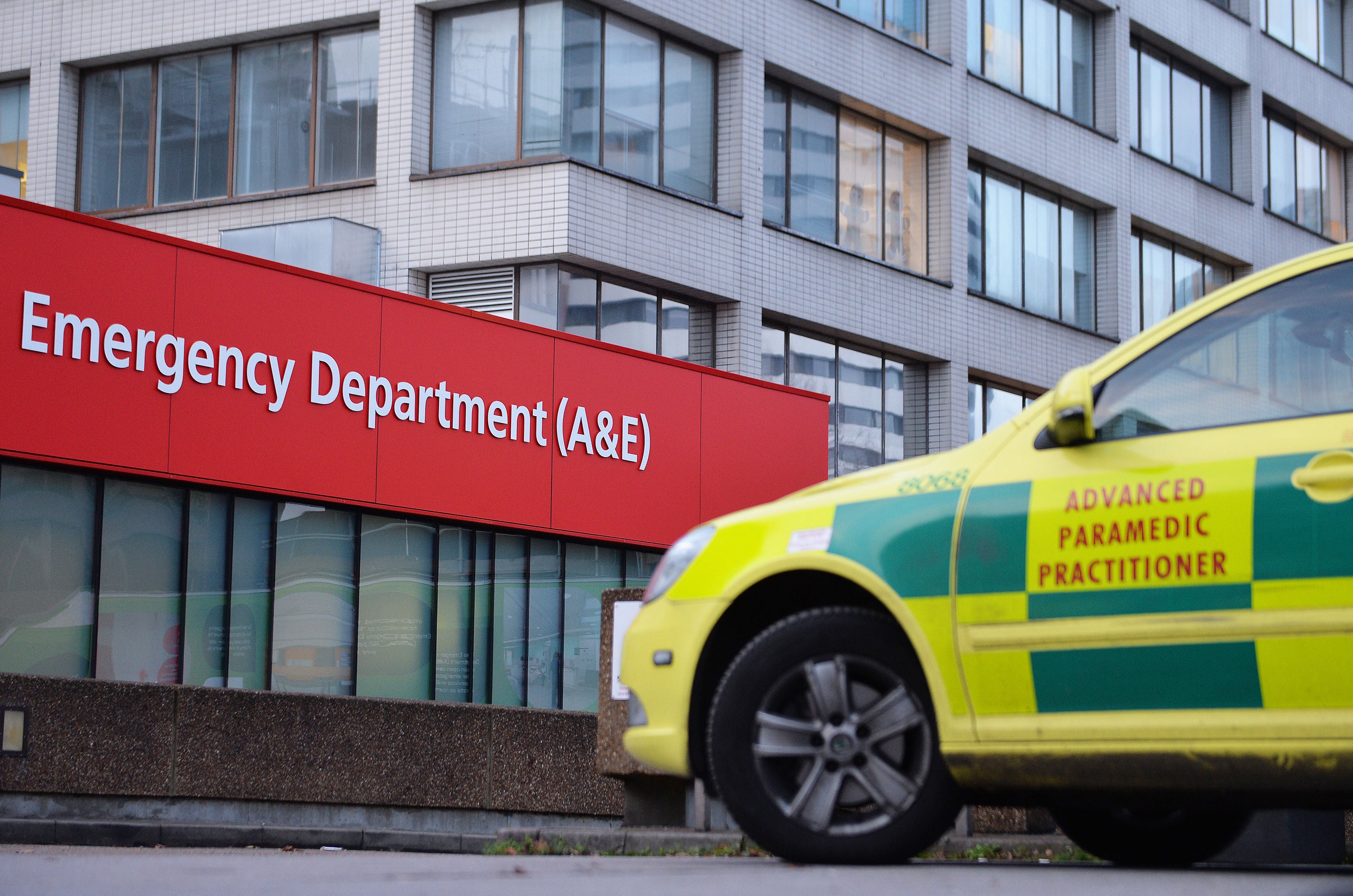NHS forced to publish hidden trolley wait data by UK regulator
Exclusive: NHS publishes data showing almost 1 million 12-hour trolley waits in 2021-22

The NHS has been forced to publish hidden trolley waits data, after intervention by the UK Statistics Authority, The Independent has learned.
In a letter to NHS Digital and NHS England in July, Ed Humpherson director general for regulation at UKSA asked the organisations to publish monthly data on patients whose total wait in A&E is longer than 12 hours, following an ongoing row with emergency care leaders.
NHS England promised to publish this internal data but has yet to comply, and as a result it was referred to UKSA by the Royal College of Emergency Medicine over concerns that the public data is misleading.
Last month The Independent revealed 100,000 patients a month are now waiting 12 hours in A&E from the time they arrive, which is more than five times higher than figures published by NHS England.
NHS England’s internal figures from 2019, published by The Independent, measure the total time a patient has waited in A&E, while publicly available figures only measure from the time a decision to admit has been made.
Following UKSA’s letter NHS Digital published data on 19 August showing 1 million patients have waited 12 hours from time of arrival between April 2021 and March 2022. However, it is not clear whether the organisations will agree to regularly publish the data each month, rather than annually as it currently is.
Dr Katherine Henderson, president of the Royal College of Emergency Medicine, told The Independent: “For some time, we have been calling for NHS England to publish the 12-hour data measured from time of arrival. This data will show the real scale and depth of the crisis that urgent and emergency care is facing. We believe that through transparency around the sheer number of patients facing 12-hour waits, we can drive political and health leaders into action.
“We know that this data is already collected by every trust. Yet currently, only the 12-hour data measured from decision to admit to admission is published – we think this is misleading and obfuscates the truth and the reality of the situation.
“We hope NHS England listens to the Office for Statistics Regulation, and that NHS England begins to routinely publish this data as a matter of transparency and honesty. It will be a catalyst for action and a catalyst for reducing long waiting times and patient harm.”
She said the urgent and emergency care system in the UK is “ceasing to function as it should”, adding that services are in crisis and the first step for politicians in tackling it is “honesty” around 12-hour waits.
Statistician Steve Black, who co-authored a study in the Emergency Medicine Journal, previously told The Independent that based on hidden data there could be 1,000 additional patient deaths each month.
According to an analysis of the data obtained by The Independent on excess deaths, and data on Covid deaths by The Financial Times, A&E waiting times could be driving 500 deaths a week.
The Royal College of Emergency Medicine has repeatedly called for NHS England to publish more detailed figures, writing to chief executive Amanda Pritchard in May and UKSA in June.
UKSA previously looked into the discrepancies in the data sets in 2017 and determined there was no intention to mislead on the part of NHS England and NHS Digital.
Following a letter from the Royal College of Emergency Medicine, UKSA sent a letter to NHS Digital and NHS England, which stated: “As you will be aware, the figures published in the monthly A&E Attendances and Emergency Admissions release refer to those patients who endure a wait of more than 12 hours from decision to admit to admission.
“However, concerns have been raised that this figure is misleading as it does not highlight the full extent of the problem of the number of patients who endure a wait of more than 12 hours from the point of arrival in A&E to the time they are discharged, admitted or transferred.”
The regulator said it had previously written to the directors of NHS Digital and NHS England on the topic of 12-hour waits and concluded the data was not misleading but had the potential to confuse users.
It said: “There appears to be a clear user need for more frequent figures on the number of patients whose total time in A&E exceeds 12 hours. This would additionally allow greater comparison of figures for England with those for Wales, Scotland and Northern Ireland, where statistics are published on either a monthly or a quarterly basis. We would like to ask you jointly to take steps to make these figures available on a monthly basis, in a way which is easily accessible and clear to users, and to keep us updated of progress in this area.”
NHS England did not answer questions from The Independent over whether it would agree to publish monthly data following the UK Statitistics Authourity’ letter in July.
A spokesperson referred to the yearly publication of 12 hour waits from arrival data and said “NHS England will respond to the UKSA letter in due course.”
NHS Digital was approached for comment.
Join our commenting forum
Join thought-provoking conversations, follow other Independent readers and see their replies
Comments


Bookmark popover
Removed from bookmarks